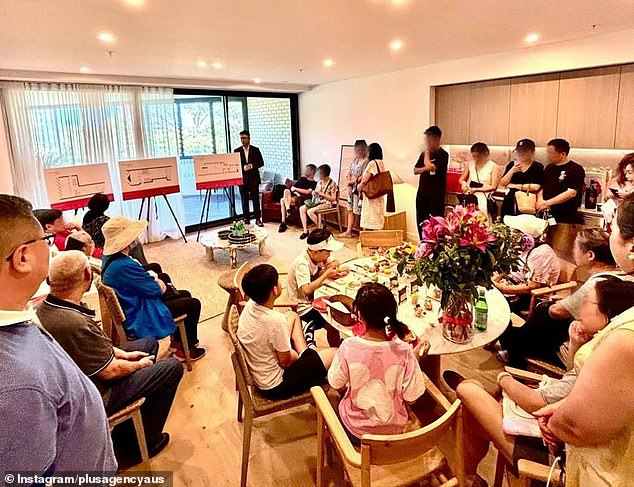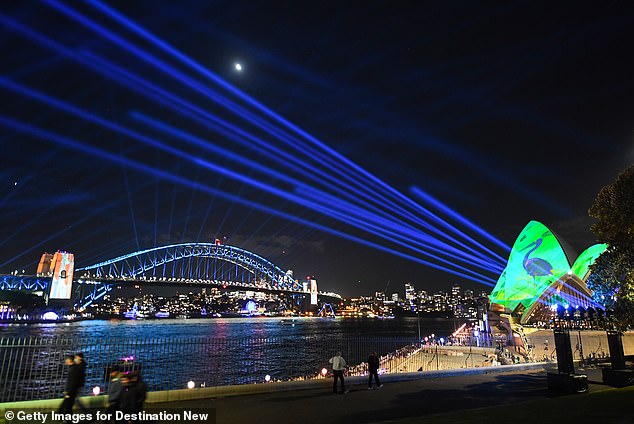Sydney is now so expensive that foreigners are looking to other states to buy property, creating more competition for real estate in other parts of Australia.
New Australian Taxation Office data released on Friday showed New South Wales was the only state where foreigners bought less real estate in 2022-23.
This occurred as all other states and territories experienced double-digit increases in the combined count of new homes, established homes and vacant land sold.
Foreigners spent an average of $914,000 on an Australian property in the last financial year, with overseas transactions up 27 per cent across Australia.
Sydney’s median house price of $1.4 million is by far the most expensive among Australia’s capital markets, and one property expert reveals foreigners are looking at other major cities.
Sydney is now so expensive that foreigners are looking to other states to buy property, creating more competition for real estate in other parts of Australia.

New Australian Taxation Office data released on Friday showed New South Wales was the only state where foreigners bought less real estate in 2022-23 (pictured, prospective buyers in Sydney).
Foreigners, and not just Australians, now find it increasingly unaffordable, with New South Wales seeing a 1 per cent drop to 656 foreign transactions in 2022-23, tax office data showed.
Peter Li, managing director of Plus Agency, which handles $200 million a year in Australian property sales to overseas Asian buyers, said high prices in Sydney meant foreigners were looking elsewhere in Australia.
“High prices in Sydney are driving some buyers to other states,” he told Daily Mail Australia.
“Let’s remember that, in addition to the high prices, they also have to pay a significant stamp duty and then a land tax.”
In comparison, Victoria is proving particularly popular with 2,240 transactions (an increase of 32 per cent) with most activity concentrated in Melbourne, where the median house price is $937,289.
Queensland saw a 17 per cent increase with foreigners mainly buying properties in the Gold Coast and Brisbane, where the midpoint of $937,479 made it Australia’s second most expensive state capital market.
Juwai IQI co-founder and CEO Daniel Ho said while Queensland had more foreign buyers, New South Wales and Victoria attracted more foreign millionaires.
“They appreciate Australia’s strong economy, good education system and attractive lifestyle,” he said.
Western Australia, however, saw the largest increase among the states of 46 per cent, to 322 foreign transactions.
The median house price in Perth rose 22.2 per cent on the year to $769,691, CoreLogic data showed.
South Australia saw a 40 per cent increase, equivalent to 459 foreign transactions, in a state where the median house price in Adelaide is $811,059.
Tasmania saw a 25 per cent increase, leading to 138 overseas transactions where the median house price in Hobart is $697,770.

Peter Li, managing director of Plus Agency, which handles $200 million a year in Australian property sales to overseas Asian buyers, said high prices in Sydney meant foreigners were looking elsewhere in Australia.
The Australian Capital Territory saw a 79 per cent increase to 369 foreign transactions, where the median house price in Canberra is $961,403.
Property buyers who do not live in Australia as permanent residents must obtain approval from the Foreign Investment Review Board to purchase any home, whether new or established.
Exemptions are only granted to foreigners to purchase an existing property if they can prove that they will live there as their main place of residence or that they will redevelop the property.
Li said foreigners are increasingly buying land to avoid having to pay stamp duty on an established home.
“House and land packages are a way for overseas buyers to save on stamp duty,” he said.
‘You only pay stamp duty on the land and not on the construction price of the house.
‘So for a million dollar house, you could save 50 per cent on stamp duty compared to a house that has already been built.
“This is especially important for overseas buyers who also pay additional stamp duty on top of the same tax everyone else pays.”


